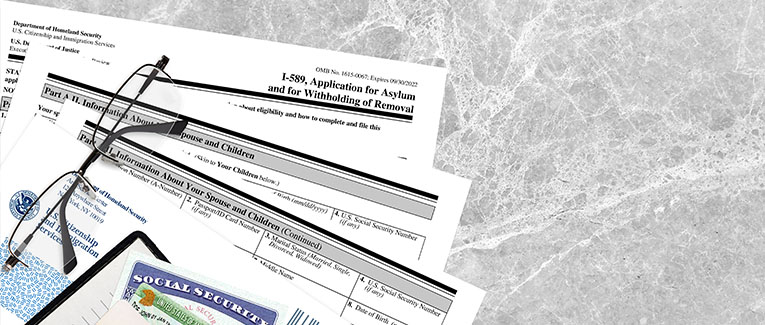
Introduction
Asylum status and refugee status are closely related. They differ only in the place where a person asks for the status. Asylum is asked for in the United States; refugee status is asked for outside of the United States. However, all people who are granted asylum must meet the definition of a refugee.
The Refugee Act of 1980 regulates U.S. asylum policy as well as governing refugee procedures. The Act, for the first time, established a statutory basis for granting asylum in the United States consistent with the 1967 United Nations Protocol on Refugees.
Adjustments to Permanent Residency
The Immigration Act of 1990 increased the ceiling from 5,000 to 10,000 per year, effective for fiscal year 1991. It also waived the annual ceiling beginning in fiscal year 1991 for those asylees who had met the required 1-year waiting period and filed for adjustment of status on or before June 1, 1990.

New Immigrants Insurance
Get QuotesFor visitors, travel, student and other international travel medical insurance.
Visit insubuy.com or call +1 (866) INSUBUY or +1 (972) 985-4400Eligibility
- must ask for asylum at a port-of-entry (airport, seaport or border crossing), or
- file an application within one year of your arrival in the United States.
- You may ask later than one year if conditions in your country have changed or if your personal circumstances have changed within the past year prior to your asking for asylum, and those changes of circumstances affected your eligibility for asylum.
- You may also be excused from the one-year deadline if extraordinary circumstance prevented you from filing within the one-year period after your arrival, so long as you apply within a reasonable time given those circumstances.
You may apply for asylum regardless of your immigration status, meaning that you may apply even if you are illegally in the United States. In addition, you must qualify for asylum under the definition of “refugee.”
Your eligibility will be based on information you provide on your application and during an interview with an Asylum Officer or Immigration Judge.
- If you have been placed in removal (deportation) proceedings in Immigration Court, an Immigration Judge will hear and decide your case.
- If you have not been placed in removal proceedings, an Asylum Officer will interview you and decide whether you are eligible for asylum. Asylum Officers will grant asylum, deny asylum or refer the case to an Immigration Judge for a final decision.
- If an Asylum Officer finds that you are not eligible for asylum and you are in the United States illegally, the Asylum Officer will place you in removal proceedings and refer your application to an Immigration Judge for a final decision. Immigration Judges also decide on removal if an applicant is found ineligible for asylum and is illegally in the United States.
- If you are in valid immigrant or nonimmigrant status and the Asylum Officer finds that you are not eligible for asylum, the Asylum Officer will send you a notice explaining that the USCIS intends to deny your request for asylum. You will be given an opportunity to respond to that notice before a decision is made on your application.
Application Procedure
The immigration judge may grant the claim or may issue a denial and an order of deportation. Under this system USCIS asylum officers issue relatively few denials, but an interview followed by a referral to EOIR represents the asylum officer’s judgment that the application is not readily grantable. An applicant who fails without good cause to keep a scheduled appointment for an asylum interview is referred immediately to EOIR for deportation; this is considered to be one type of case closure.
To ask for asylum, you will need to complete an USCIS Form I-589 (Application for Asylum and for Withholding of Removal) and follow the instructions carefully. There is no fee. You can normally expect to complete your asylum processing within 180 days from the date of filing your application.
If you are applying with the USCIS for asylum, you should send your application to the lockbox that corresponds with your place of residence. You will find information on where to send your application in the instructions to USCIS Form I-589. If you have been placed in proceedings before an Immigration Judge, you should file the form with the Immigration Court.

New Immigrants Insurance
Get QuotesFor visitors, travel, student and other international travel medical insurance.
Visit insubuy.com or call +1 (866) INSUBUY or +1 (972) 985-4400Traveling Outside the United States
Work Permit
Asylum applicants cannot apply for employment authorization at the same time they apply for asylum. Rather, you must wait 150 days after the USCIS receives a complete application before you can apply for employment authorization. The USCIS has 30 days to either grant or deny your request for employment.

